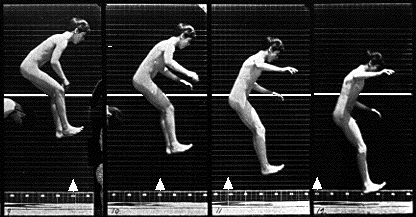
Fashioning the Body: Versions of the Citizen, the Self, and the Subject
The Evergreen State College | Fall 2007-Winter 2008
User Login |
my own little exam questions. . .Emily Exam Design, Paper #3 November 16, 2007 Final Exam Questions and Rubrics 1. (Citizen) How does the idea of the “form” stand in as a signifier for the body, and, based on what information is asked, how does this create a discourse of the body and citizen status? Think about the concept ‘citizen’. We talked before in class after reading a passage from Tomorrow’s Eve that lead us to question the nature of the act of recording the body, and whether the act of recording altered the original. In relevance to the book, recording literally meant recording the voice of the body. However, can we apply our insight from this passage to the notion of the ‘form’? Does the form change the original body we are attempting to categorize? What does the form do to the concept of the citizen? Think back to our revue workshop from week four when we “cited” texts by cutting them up and making them work for our purposes. Remember that this performative exercise was to understand citation as a discourse, that the cited might actually become the product. In terms of semiotics, does the signifier become the signified, and/ or does the signified become the signifier? Remember, linguistics and semiotics are not just words – they also include any system of meaning and communication. 2. (Self) Can the use of technology create a full and complete combination of the organic human with the cyborg, and when will the lines become indefinable? And why does this coupling or hybridism often carry a stigma? For this question, the student could consider Das Shone Machden (The Beautiful Girl) by Hannah Hoch. Using a photomontage as an allegory for modernization, how does Hoch use the chaotic placement of synthetic and organic elements to express the rapid expanse of technology in the social realm? Do you see a transformation of personhood, from body into machine? As Jennifer Gonzalez writes in the article, “Envisioning Cyborg Bodies”: “This term [Miscegenated] not only trails a violent political history in the United States but is also dependent on a eugenicist, genocidal concept of illegitimate matings. At the same time, this may be the very reason that certain writers have employed the term – to point out the “forbidden” nature of the “coupling” of human and machine.” Is this “coupling” seen as a threat to our humanity, our personhood? What does this terminology being used say about the discourse about embodiment? Does the cyborg always refer to the product of sexual procreation, or can characteristics of one become the other (as in, cyborg with human attributes, or humans with synthetic additions)?
3. (Subject) How is space and setting used as a symbol of power and hierarchy to create the subjected body in “The Metropolis”? How do bodies within these settings form and act within models of discipline and power? Think about the way the buildings are constructed and set up, where they are in the different layers of the city, and how workplaces vary. Draw on the passage from Michel Foucault in “The Political Investment of the Body” In The Body: A Reader by Mariam Fraser and Monica Greco: “This political investment of the body is bound up, in accordance with complex reciprocal relations, with its economic use; it is largely as a force of production that the body is invested with relations of power and domination; but, on the other hand, its constitution as labor power is possible only if it is caught up in a system of subjection; The body is a useful force only if it is both a productive body and a subjected body.” In terms of the subjected/ productive body and the Foucaultian concept of objectivity, explain how the notion of the political investment of the body relates to the use of setting and space as a control of bodies in “Metropolis.’ Also, consider a quotation regarding the environment of bodies in “Space, Time, and Perversion” by Elizabeth Grosz, in which she states: “As a political and hence a social relation, the body politic, whatever form it may take, justifies and naturalizes itself with reference to some form of hierarchical organization modeled on the (presumed and projected) structure of the body.” In what ways does the construct of the city in “Metropolis” function to express Lang’s vision of the subjected body, and how does Grosz’s comment relate?
Submitted by Emily on Fri, 11/30/2007 - 6:58pm. Emily's blog | login or register to post comments | printer friendly version
|
Who's onlineThere are currently 0 users and 1 guest online.
Events
|
|||||||||||||||||||||||||||||||||||||||||||||||||